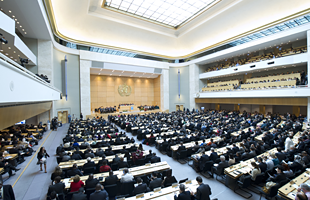Delegates at the World Health Assembly adopted a resolution to address the health impacts of air pollution – the world’s largest single environmental health risk. Every year 4.3 million deaths occur from exposure to indoor air pollution and 3.7 million deaths are attributable to outdoor air pollution. This was the first time the Health Assembly had debated the topic.
The resolution highlights the key role national health authorities need to play in raising awareness about the potential to save lives and reduce health costs, if air pollution is addressed effectively. It also stresses the need for strong cooperation between different sectors and integration of health concerns into all national, regional and local air pollution-related policies. It urges Member States to develop air quality monitoring systems and health registries to improve surveillance for all illnesses related to air pollution; promote clean cooking, heating and lighting technologies and fuels; and strengthen international transfer of expertise, technologies and scientific data in the field of air pollution.
The resolution asks the WHO Secretariat to strengthen its technical capacities to support Member States in taking action on air pollution. This includes further building capacity to: implement the “WHO air quality guidelines” and “WHO indoor air quality guidelines; conduct cost-benefit assessment of mitigation measures; and advance research into air pollution’s health effects and effectiveness. At the Sixty-ninth World Health Assembly, WHO will propose a road map for an enhanced global response by the health sector that reduces the adverse health effects of air pollution. For more information see: http://www.who.int/mediacentre/news/releases/2015/wha-26-may-2015/en/
The Indoor Air Pollution Guidelines can be found here: http://www.who.int/indoorair/guidelines/hhfc/en/











Follow us on: